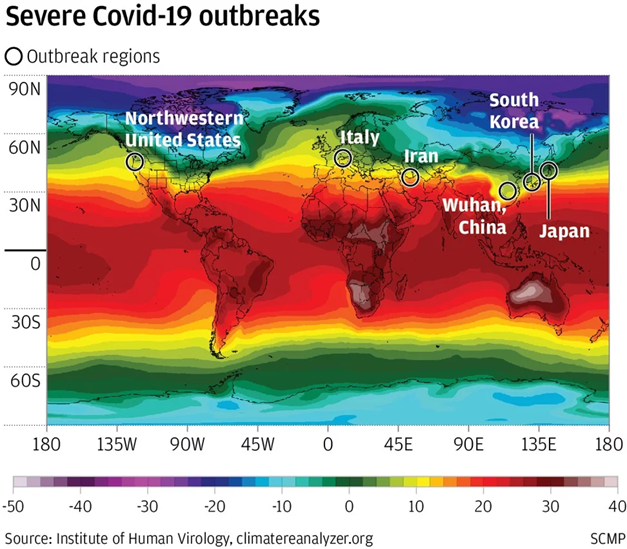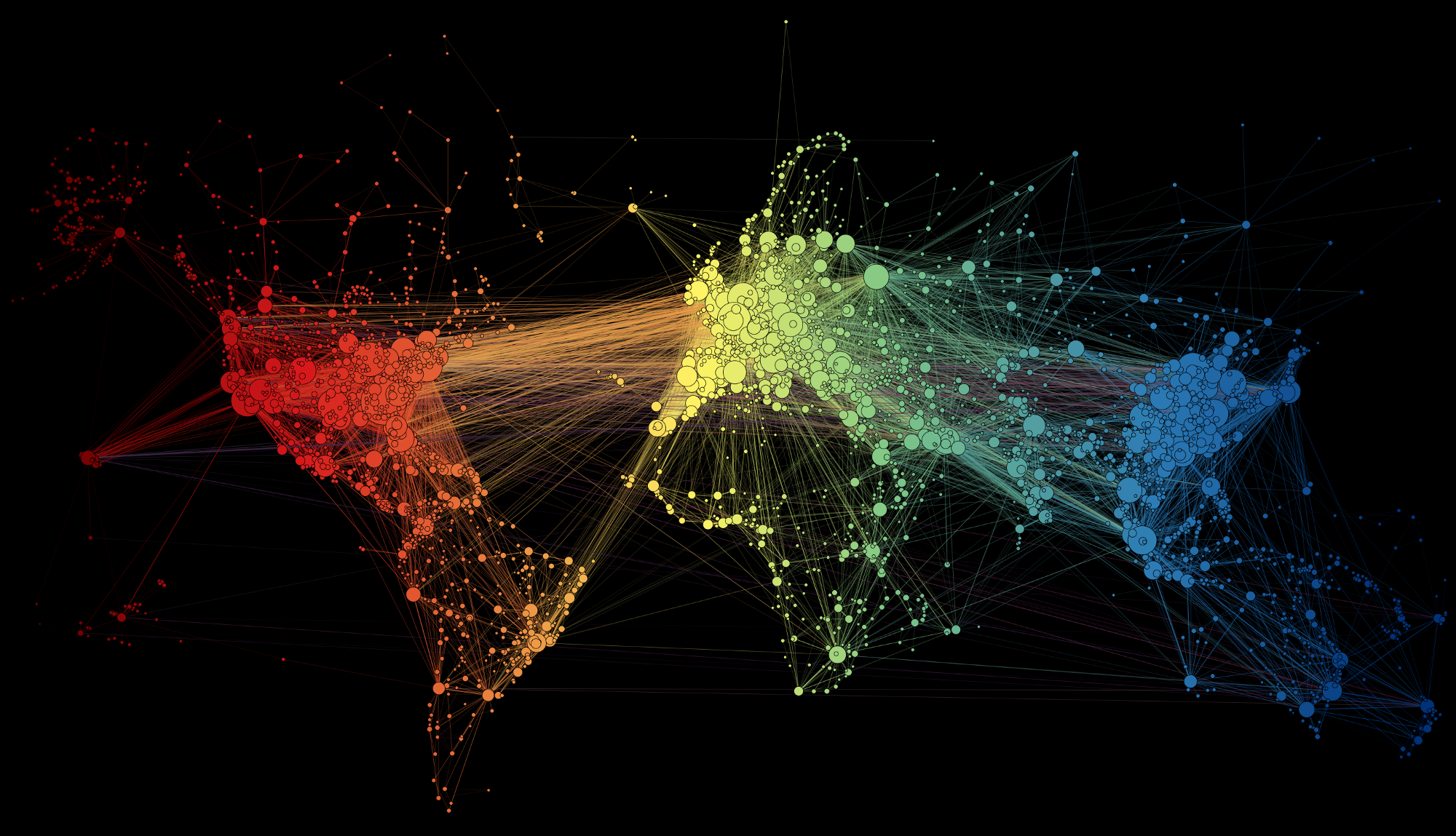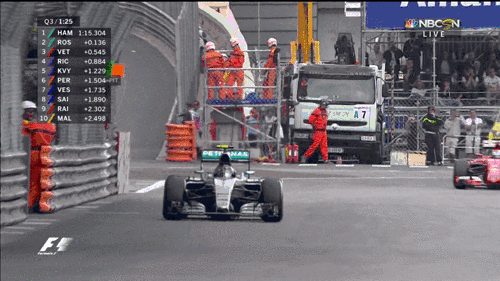Will Warm Weather Kill Coronavirus?
Probably not

Looking at the map above, it’s tempting to think that coronavirus may be limited to temperate zones. Wuhan, Seoul, Qom, Milan, and Seattle were all between 5–11° C during their outbreaks. By this logic, the global south may be protected, and winter may bring everyone some relief. Sadly, this probably isn’t true.
Let’s look at another map.

This is the global aviation network. As you can see, the affected regions are not just cooler, they’re also much more connected. This more than anything may explain where the virus has spread.
The global travel ban that is racism
In a weird way, racism more than temperature has protected the global south.
Under border apartheid, people from rich and white colonial countries have the right to travel and the poor, brown and formerly colonized do not. As a Sri Lankan, I have visa-free access to 22% of the world compared to 95% as a Canadian. The Global South lives under a permanent travel ban, which has proved useful in the age of coronavirus. We simply have fewer airports, fewer flights, and less personal freedom.
Now the tables have turned, with Italians trying to escape to Ethiopia, and countries all over the world instituting travel bans on Europe. For the first time in my life, a brown passport is useful. However, this protection isn’t secure.
Coronavirus doesn't see race and borders can only delay and not stop its spread. Unless there’s some biological protection that the virus gives a shit about, we’ll get infected all the same, just later.
So is there? Racism aside, is temperature any defense against this virus?
Can heat slow corona down?
We already know that high temperatures won’t kill coronavirus. There are significant outbreaks in Malaysia and Indonesia, which are currently hot as balls (25–35° C). The question then is whether high temperatures can even slow it down.
The answer is probably yes. But don’t get too excited yet. There likely is a temperature effect, but not enough to really slow this thing down.
According to a paper by researchers at Sun Yat-sen University in Guangzhou:
Studies found that during the outbreak of SARS in 2003, when the temperature was low, the risk of increasing daily incidence rate could be 18.18 times higher than that under higher temperature.
And yet it is a myth that SARS went away on its own as the weather changed.
SARS did not die of natural causes. It was killed by extremely intense public health interventions in mainland Chinese cities, Hong Kong, Vietnam, Thailand, Canada and elsewhere. These involved isolating cases, quarantining their contacts, a measure of “social distancing,” and other intensive efforts. (Marc Lipsitch, Harvard)
Hence while researchers at the University of Maryland and Sun Yat-sen University have found strong temperature effects on coronavirus, it’s just not strong enough. Because temperature is only one variable. When it comes to the novel coronavirus, the most important effect may be its novelty.
The novel coronavirus

When F1 cars are running practice laps, they swing wildly back and forth to warm their tires. This temperature difference gives more grip and can lead to tenths-of-a-second faster lap times. In competition, this makes a big difference. However, if no one else is racing, it doesn’t matter. It’s an F1 car vs. nothing.
Right now, it’s the coronavirus vs. nothing. Our antibodies aren’t even on the track. Temperature might matter, but it doesn’t matter that much. The most important factor right now is that COVID-19 is brand new.
New viruses have a temporary but important advantage — few or no individuals in the population are immune to them. Old viruses, which have been in the population for longer, operate on a thinner margin — most individuals are immune, and they have to make do with transmitting among the few who aren’t. In simple terms, viruses that have been around for a long time can make a living — spread through the population — only when the conditions are the most favorable, in this case in winter. (Marc Lipsitch, Harvard CCDD)
In this way, even pandemic flu is quite different from seasonal flu. The latter can only spread when conditions are favorable, but a brand new flu finds favorable conditions everywhere.
The consequence is that new viruses — like pandemic influenza — can spread outside the normal season for their longer-established cousins. For example in 2009, the pandemic started in April-May (well outside of flu season), quieted in the summer (perhaps because of the importance of children in transmission of flu), and then rebounded in September-October, before the start of normal flu season. Seasonality does not constrain pandemic viruses the way it does old ones. This pattern is common for flu pandemics. (Marc Lipsitch, Harvard CCDD)
This is why epidemiologist Marc Lipsitch (who is a must-follow btw) says that warmer weather will probably not make coronavirus go away. “The size of the change is expected to be modest, and not enough to stop transmission on its own.”
So what?
Therefore, the WHO still issues the same guidance to warm countries as cold ones. The temperature effect still isn’t proven and, either way, it’s not enough to kill this thing.
We have no reason to believe that this virus would behave differently in different temperatures, which is why we want aggressive action in all countries to make sure that we prevent onward transmission, and that it’s taken seriously in every country. (Dr. Maria van Kerkhove, WHO briefing, 5 March 2020)
It seems quite likely that coronavirus prefers cooler climates, but it’s quite happy to spread south as well. The global south may get this disease last, but we’ll still get it.
In the end, the only temperature that matters is 37° — the temperature of the human body. Until we build protections in there (a vaccine), no one is truly safe, and intense suppression measures will have to be used all over the world.
In a comment from Chih-Pei Chang (Professor of Atmospheric Sciences) he recommended this study by Jingyuan Wang, Ke Tang, Kai Feng and Weifeng Lv as more robust, though still not peer-reviewed.

What he mentions is that the temperature really affects the lifespan of the virus on surfaces, but human-to-human contact will still be
The temperature and humidity affect the activity duration of the virus in the environment. Higher temperature shortens the duration, thus transmission through touching a surface (door handles, hand rails, walls, public transportation…..) will be reduced. A public surface that was touched by 100 people over 12 hours will have containment of 100 hands accumulated when the next person touches it. But if the virus “life” is only 6 hours, then the number of germs on average will be reduced by 50%. Infection depends on density of the germs not in a linear way. There may be certain thresholds for the various risk levels. So a 50% reduction of germ density could mean a larger risk deduction. Even if the relationship is linear, a reduction of 50% in people infected by touching that surface is very significant.
On the other hand, the germ density in person-to-person infection through direct contact (including direct droplets) is orders of magnitude higher than indirect surface contact. The effect is also immediate, and has nothing to do with the lifetime of the viruses as long as it is not immediately deactivated. It doesn’t matter how hot ambient temperature is in South Asia, viruses in places of person to person contact will always be as contagious as anywhere else.
Temperature, Humidity and Latitude Analysis to Predict Potential Spread and Seasonality for COVID-19 (March 5, 2020). Available at SSRN: https://ssrn.com/abstract=3550308 or http://dx.doi.org/10.2139/ssrn.3550308
Temperature Significantly Change COVID-19 Transmission in 429 cities, Sun Yat-sen University.
Seasonality of SARS-CoV-2: Will COVID-19 go away on its own in warmer weather? Marc Lipsitch, DPhil. Professor of Epidemiology and Director, Center for Communicable Disease Dynamics, Harvard T.H. Chan School of Public Health